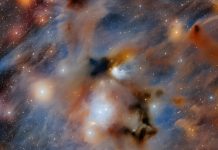
Gamma-ray bursts (GRBs) are among the most powerful and mysterious events in the universe. These bursts emit more energy in a few seconds than the sun will in its entire ten-billion-year lifetime.
Despite their discovery in 1967, scientists are still unraveling how these cosmic phenomena produce such immense light.
Dr. Jon Hakkila from The University of Alabama in Huntsville, along with his team, has recently made significant strides in understanding the behavior of these bursts through new research published in The Astrophysical Journal.
What are Gamma-Ray Bursts?
GRBs are intense explosions of gamma radiation occurring in distant galaxies. They are visible across vast distances, making them excellent tools for studying the early universe.
These bursts originate from the jets of radiation and particles launched by the formation of black holes when massive stars collapse.
The Mystery of Light Production One of the biggest challenges in studying GRBs has been understanding their light patterns, or light curves, which show the intensity of light over time.
No two GRB light curves are the same; some last for just milliseconds, while others can stretch over several minutes. The bursts typically show a pattern of brightening and then fading in a series of energetic pulses.
Dr. Hakkila describes an unusual feature of these pulses: their brightness patterns can reverse themselves, much like palindromes (words that read the same backward and forward, like ‘kayak’).
This reversible pattern is puzzling because time, unlike a palindrome, only moves in one direction. Explaining this phenomenon has been a longstanding problem in astrophysics.
A New Explanation The recent study proposes a novel theory that the jets emitting these bursts might be moving laterally, or sideways, which has not been considered before.
When these jets cross our line of sight, they produce light first from one side, then from the center, and lastly from the opposite side as they move.
This movement can make the jet appear to brighten and then dim, mirroring the structure of the light in reverse order.
This side-to-side motion of the jets, combined with the rapid expansion typical of GRB jets, offers a potential explanation for the reversed light patterns observed in GRBs. The jets, behaving more like fluid streams than solid objects, display a dynamic and curving structure.
Implications of the Study By suggesting that GRB jets have a lateral motion, this research not only provides insights into how these bursts produce light but also serves as a laboratory for studying special relativity—the effects observed when objects move close to the speed of light.
This theory could reshape our understanding of the underlying mechanisms of GRBs and enhance our knowledge of the early universe.
Dr. Hakkila’s work highlights the importance of considering new perspectives and models in the study of cosmic phenomena. As researchers continue to explore these ideas, we may come closer to solving the mysteries of gamma-ray bursts, one of the most extreme events known in the cosmos.



